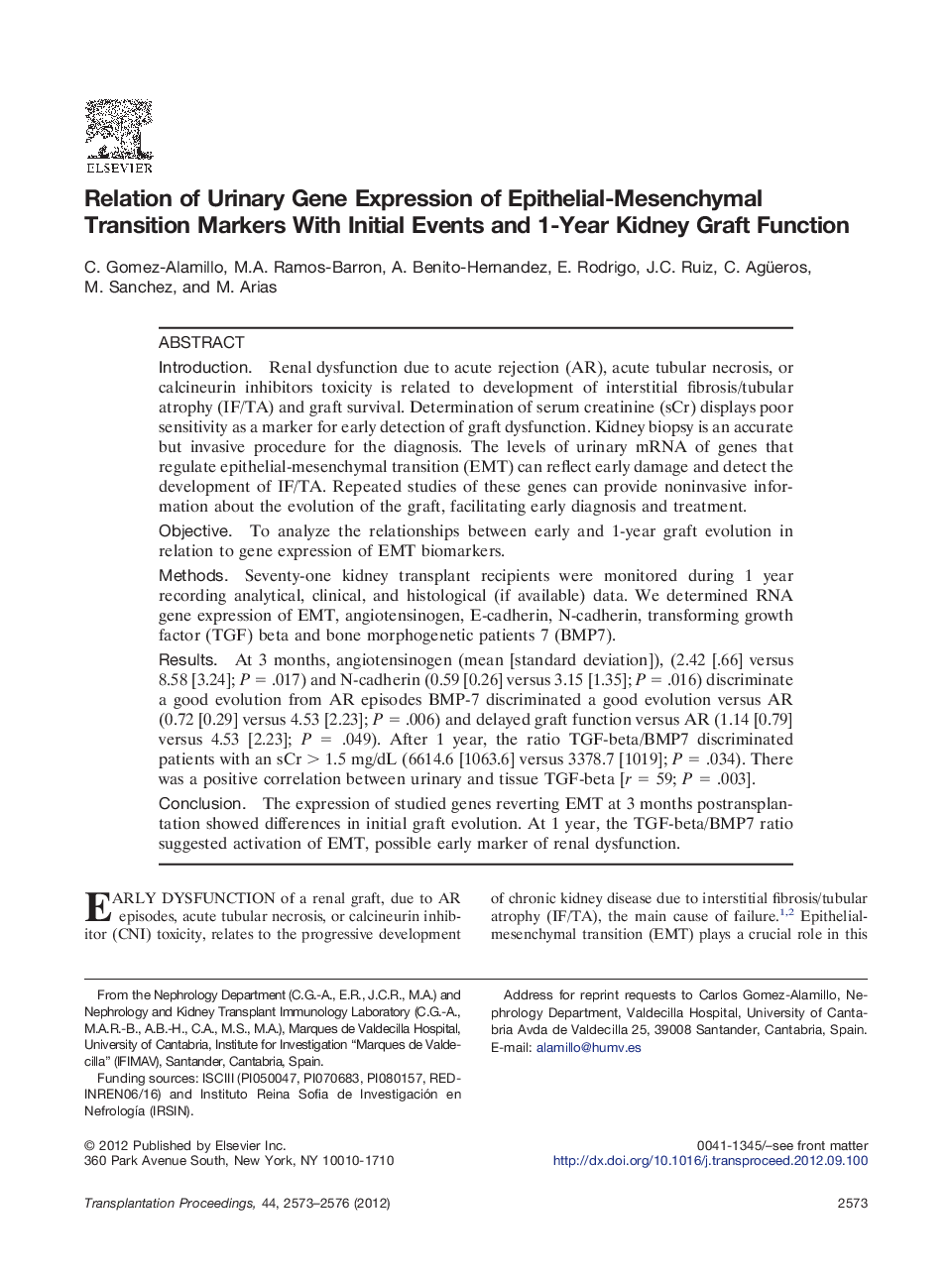| Article ID | Journal | Published Year | Pages | File Type |
|---|---|---|---|---|
| 4256260 | Transplantation Proceedings | 2012 | 4 Pages |
IntroductionRenal dysfunction due to acute rejection (AR), acute tubular necrosis, or calcineurin inhibitors toxicity is related to development of interstitial fibrosis/tubular atrophy (IF/TA) and graft survival. Determination of serum creatinine (sCr) displays poor sensitivity as a marker for early detection of graft dysfunction. Kidney biopsy is an accurate but invasive procedure for the diagnosis. The levels of urinary mRNA of genes that regulate epithelial-mesenchymal transition (EMT) can reflect early damage and detect the development of IF/TA. Repeated studies of these genes can provide noninvasive information about the evolution of the graft, facilitating early diagnosis and treatment.ObjectiveTo analyze the relationships between early and 1-year graft evolution in relation to gene expression of EMT biomarkers.MethodsSeventy-one kidney transplant recipients were monitored during 1 year recording analytical, clinical, and histological (if available) data. We determined RNA gene expression of EMT, angiotensinogen, E-cadherin, N-cadherin, transforming growth factor (TGF) beta and bone morphogenetic patients 7 (BMP7).ResultsAt 3 months, angiotensinogen (mean [standard deviation]), (2.42 [.66] versus 8.58 [3.24]; P = .017) and N-cadherin (0.59 [0.26] versus 3.15 [1.35]; P = .016) discriminate a good evolution from AR episodes BMP-7 discriminated a good evolution versus AR (0.72 [0.29] versus 4.53 [2.23]; P = .006) and delayed graft function versus AR (1.14 [0.79] versus 4.53 [2.23]; P = .049). After 1 year, the ratio TGF-beta/BMP7 discriminated patients with an sCr > 1.5 mg/dL (6614.6 [1063.6] versus 3378.7 [1019]; P = .034). There was a positive correlation between urinary and tissue TGF-beta [r = 59; P = .003].ConclusionThe expression of studied genes reverting EMT at 3 months postransplantation showed differences in initial graft evolution. At 1 year, the TGF-beta/BMP7 ratio suggested activation of EMT, possible early marker of renal dysfunction.
